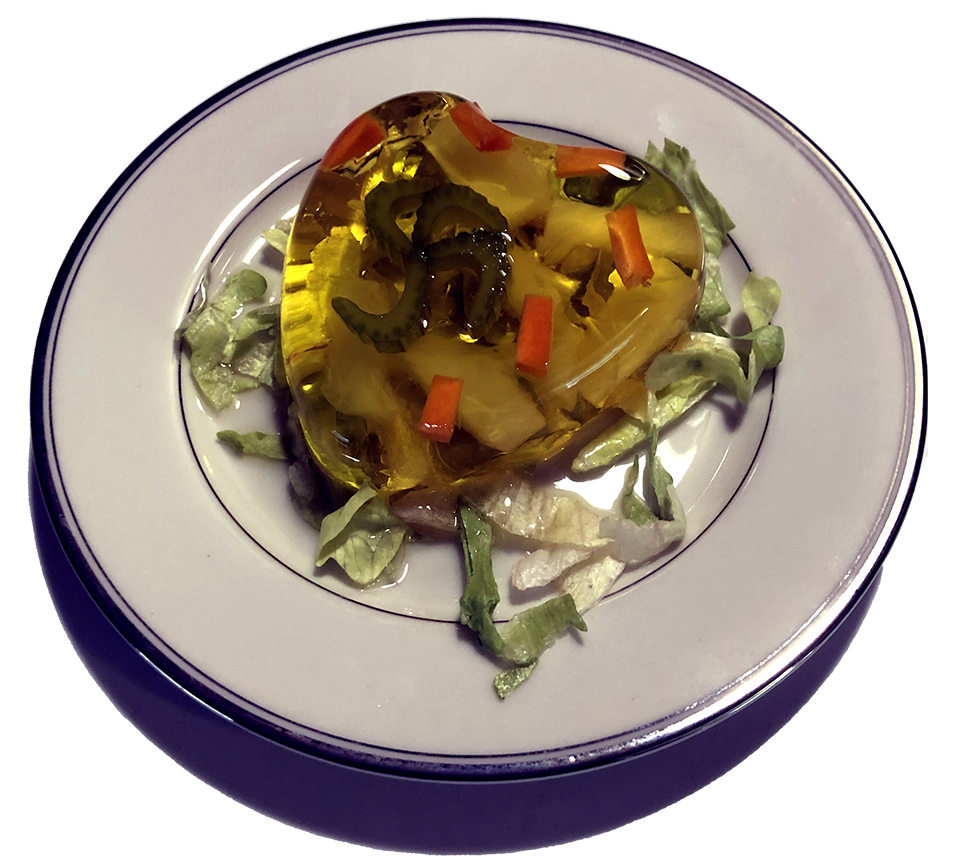
By Dorri Partain
Watch it wiggle, see it jiggle! Jelled desserts have come a long way since the 15th century, thanks to refrigeration and packaged mixes.
Mostly used in French cuisine due to the labor intensive methods of preparing gelatin, Charles B. Knox of Johnston, N.Y., developed a granulated gelatin that could be mixed with fruit juices, broth, or wines in 1889. His wife Rose was the first to use the new version and later developed the first Knox gelatin recipe book, Dainty Desserts, in 1896.
While Knox gelatin has always been unflavored and unsweetened, Pearle B. Wait (1873-1915), along with his wife May, developed the first flavored and sweetened gelatins. Using fruit flavored syrups like he had when creating cough syrups, he patented his strawberry, orange, lemon and raspberry flavored powders as JELL-O in 1897.
Wait sold his product to Orator F. Woodward in 1899 for $450, after trying to market the product himself, unsuccessfully. It was Woodward that eventually made JELL-O a success, after 15 million recipe booklets were distributed in 1902.

Unflavored gelatin has long been used to mold and suspend fruits, vegetables, nuts, marshmallows, and chopped meats in some unusual combinations. In a bold campaign to promote savory molded gelatin delights, JELL-O introduced new flavors to be used just for salads: celery, mixed vegetable, seasoned tomato, and Italian salad. As promoted in the 1964 recipe book Joys of Jell-O the new flavors “compliment the flavor of any vegetable, sea food, meat, or poultry added. It will make a salad lover of anyone.”
Whether sweet and fruity or filled with veggies and meats, individual molded gelatins (half-cup servings) were often presented at ladies’ luncheons and bridge parties, and aluminum molds were available in styles for all occasions. For optimum presentation, the molded gelatin was served on lettuce, often with a dollop of mayonnaise.
As homemakers spent less time at home and more time in careers, molded gelatins were seen as time-consuming and even old-fashioned. JELL-O discontinued the salad flavors after a few years, concentrating solely on fruit flavors and easier packaged desserts like JELL-O 1-2-3 that created its own whipped topping, and sugar-free versions.
More information about the history of gelatin can be found in Le Roy, N.Y., the “birthplace of JELL-O.” The JELL-O Gallery museum is operated by the Le Roy Historical Society. Visit the website at www.jellogallery.org.


















